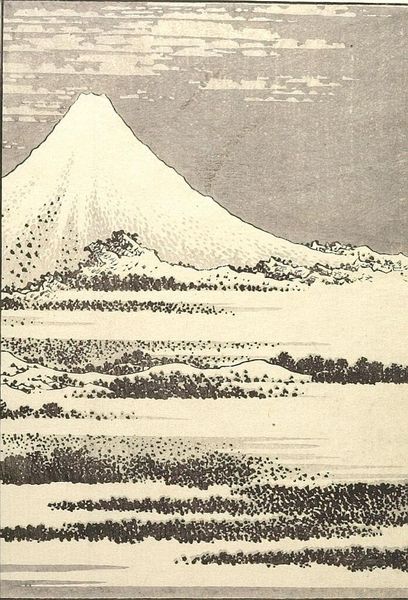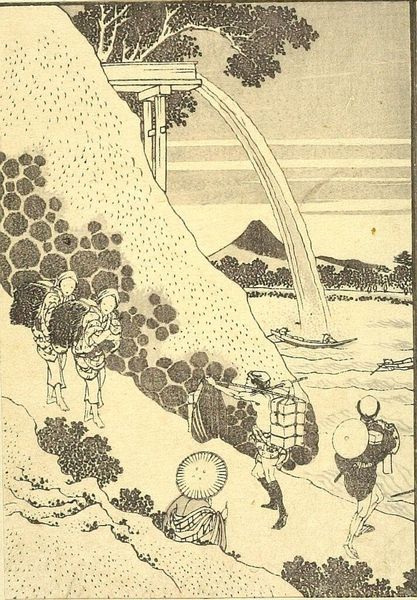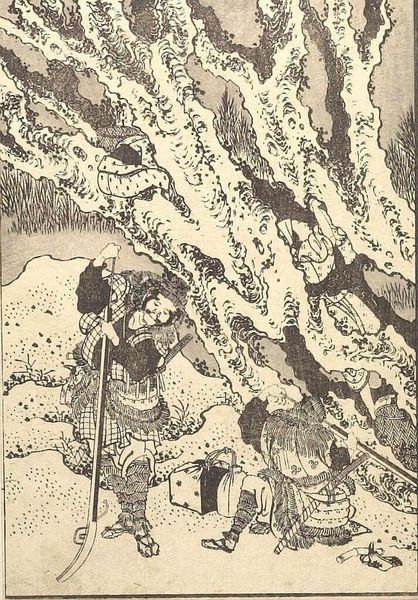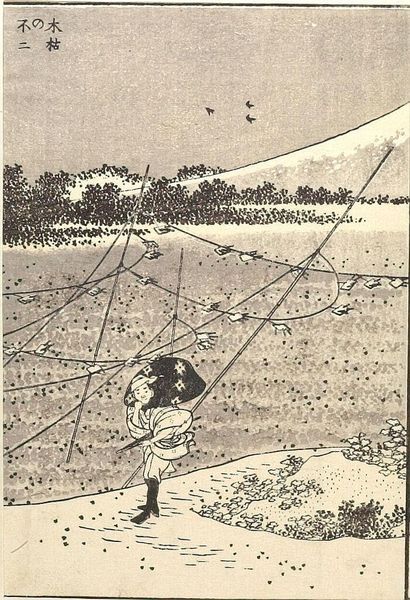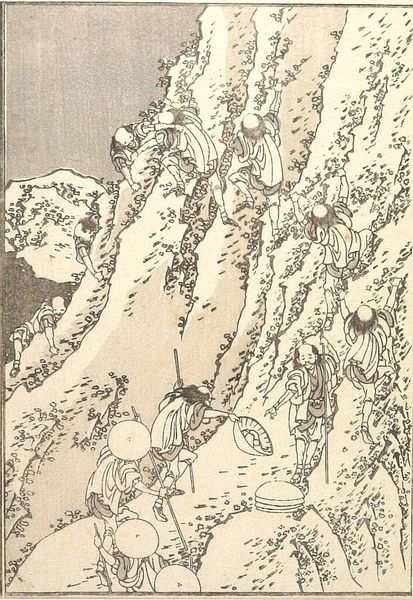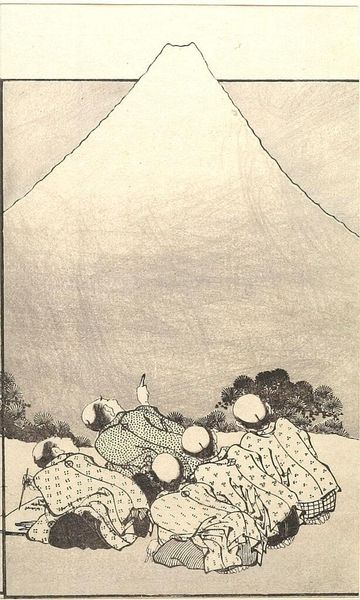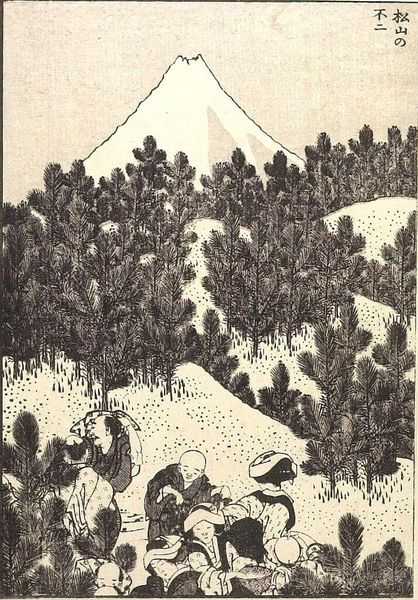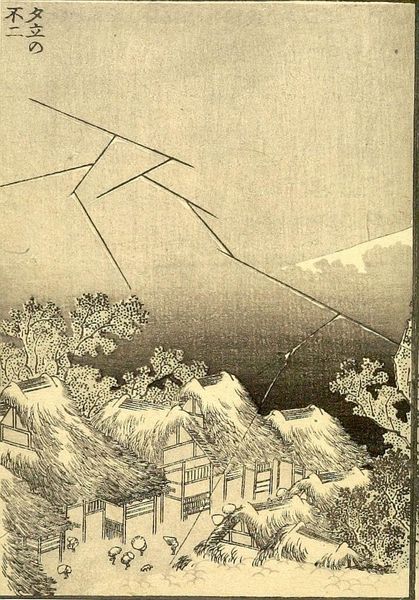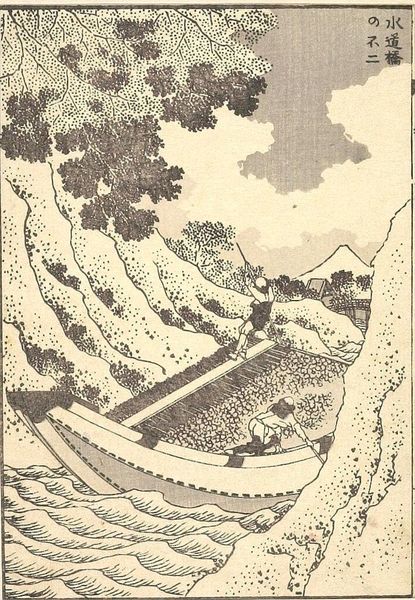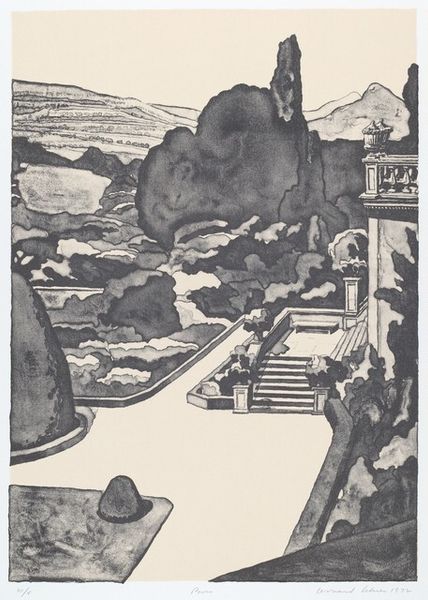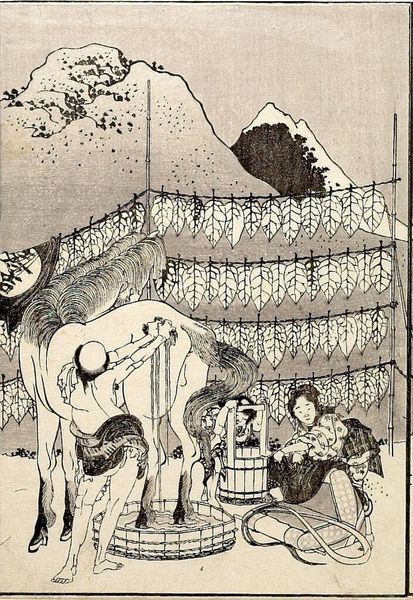
Fuji in a Winter Wind (Kogarashi no Fuji): Detached page from One Hundred Views of Mount Fuji (Fugaku hyakkei) Vol. 1 Possibly 1834 - 1835
0:00
0:00
Copyright: CC0 1.0
Curator: Hokusai's "Fuji in a Winter Wind" presents us with more than just a landscape; it's a meditation on labor, class, and the human condition set against the backdrop of Japan's most iconic mountain. Editor: The sheer austerity hits me first. It's like a study in contrasts—the solid, unwavering form of Fuji against the frantic movement implied by the windblown figures and the dilapidated structure. Curator: That structure, a watchtower, speaks volumes. It represents human intervention and perhaps even control, juxtaposed against the raw power of nature, a struggle for resources and survival. The figures, likely farmers, bent against the wind, embody that struggle. Editor: And the materials themselves tell a story. The woodblock printmaking process, the careful carving and layering of ink—it mirrors the laborious lives depicted. The paper becomes a site of both artistic creation and social commentary. Curator: Absolutely. Consider Hokusai's own biography; he was acutely aware of social inequalities and the precariousness of life for those outside the elite. His art becomes a powerful lens through which we can view the sociopolitical realities of his time. Editor: Looking at it now, I see how Hokusai uses form and composition to make a potent statement on human resilience amidst harsh conditions. It is both a snapshot of its time and profoundly relevant to current conversations of class.
Comments
No comments
Be the first to comment and join the conversation on the ultimate creative platform.
